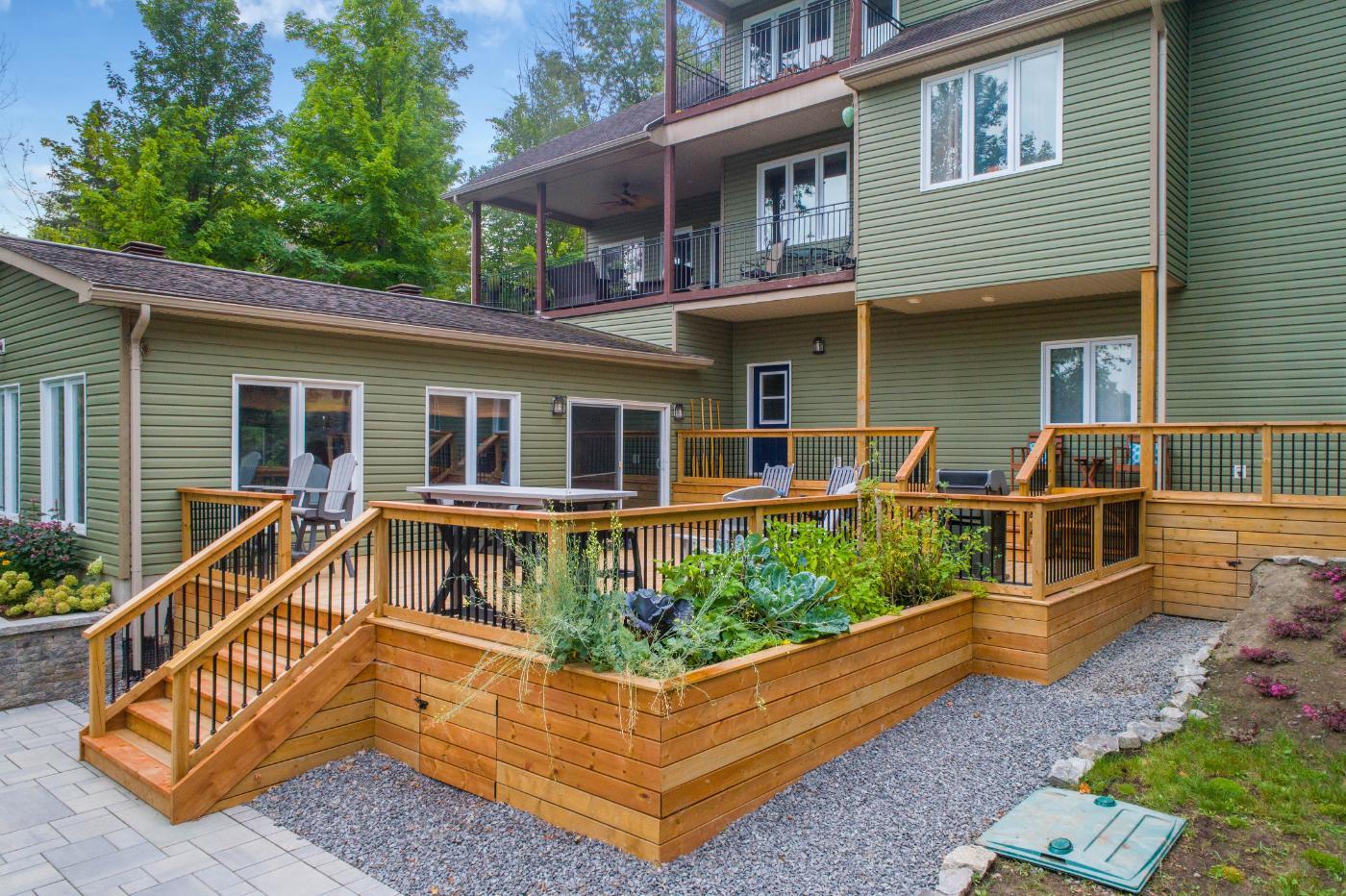Making the Right Choice for Your Outdoor Oasis
When it comes to creating your dream outdoor space, choosing the right decking material is crucial. Wood and composite decking are two popular options, each with its own set of advantages and disadvantages. In this blog post, we will compare wood decking and composite decking, helping you make an informed decision for your next outdoor project.
Wood Decking:
Wood decking has been a classic choice for outdoor spaces for centuries. It offers a natural, rusticaesthetic that many homeowners find appealing. Here are some key points to consider when choosing wood decking:
Aesthetic Appeal: Wood decks exude a timeless beauty that harmonizes with nature. The warm tones and natural grain patterns of wood can complement any outdoor setting.
Affordability: Generally, wood decking materials tend to be more budget-friendly upfront compared to composite options. However, long-term maintenance costs should also be taken into account.
Easy Installation: Wood is relatively easy to work with, making it a suitable option for DIY enthusiasts or professionals.
Customization: Wood can be stained or painted in various colors to achieve your desired look, providing flexibility in design.
Environmental Considerations: While wood is a renewable resource, it’s essential to choose sustainably sourced wood to minimize environmental impact.
Disadvantages of Wood Decking:
Maintenance: Wood decks require regular maintenance, including sealing, staining, and periodic sanding to prevent rot, warping, and decay.
Durability: Wood decking is susceptible to rot, termites, and weathering. Its lifespan can be significantly shorter than composite materials if not properly cared for.
Composite Decking:
Composite decking is a relatively newer player in the decking industry but has gained popularity due to its durability and low maintenance requirements. Here are some key points to consider when choosing composite decking:
Durability: Composite decking is highly resistant to rot, decay, termites, and weathering. It often comes with extended warranties, promising a longer lifespan compared to wood.
Low Maintenance: Unlike wood, composite decking does not require staining, sealing, or regular upkeep. Occasional cleaning with soap and water is usually sufficient.
Color Consistency: Composite decking maintains its color and appearance over time, thanks to the use of synthetic materials.
Environmental Considerations: Some composite materials incorporate recycled content, making them an eco-friendlier option. However, not all composites are created equal, so it’s essential to research the specific brand and product.
Resistance to Fading and Stains: Composite decking resists fading due to UV exposure and is less prone to staining from spills.
Disadvantages of Composite Decking:
Upfront Cost: Composite decking materials are often more expensive than wood, which may deter budget-conscious homeowners.
Limited Aesthetics: While composite decking comes in various colors and textures, some homeowners prefer the natural look of wood.
Heat Retention: Composite decking can get hotter than wood under direct sunlight, making it less comfortable for barefoot walking on scorching summer days.
Conclusion:
Choosing between wood and composite decking ultimately depends on your preferences, budget, and the level of maintenance you are willing to undertake. Wood decking offers timeless beauty but requires regular upkeep, while composite decking offers durability and low maintenance but comes at a higher initial cost.
Before making your decision, carefully assess your priorities, long-term plans for your outdoor space, and environmental concerns. Whichever option you choose, give West Shire Decks a call to work with you in building your New Outdoor Living Space!
Check Out Our Other Blogs
-
Your Deck Build Process
Facebook Twitter LinkedIn Gmail
-
Building Your Deck: Which Fascia is Better?
Facebook Twitter LinkedIn Gmail
-
How Much Does a Deck Cost?
Facebook Twitter LinkedIn Gmail
-
Best Deck Builders Near Me
Facebook Twitter LinkedIn Gmail
-
5 ways to know its time to Replace your Wooden Deck Boards
Facebook Twitter LinkedIn Gmail
-
How to Find the Right Deck Contractor for Your Project
Facebook Twitter LinkedIn Gmail







Wow, I really enjoyed reading this blog post about outdoor decking options! It’s clear that you’ve done your research and provided valuable insights for anyone looking to create their dream outdoor oasis. I particularly appreciated the information about wood decking. The description of its timeless aesthetic appeal, with warm tones and natural grain patterns, really resonated with me. It’s great to know that wood decking can complement any outdoor setting. I’m looking forward to reading more from you on this topic. Thanks for helping me make an informed choice for my next outdoor project!